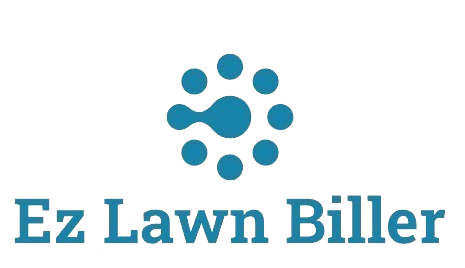Lawn care businesses often struggle with pricing their services correctly. This guide will walk you through the process of setting prices effectively.
Step-by-Step: How to Set Pricing in Your Lawn Business
As a lawn care business owner, setting the right pricing structure is crucial for your success. Pricing not only affects your profit margins but also impacts customer satisfaction and retention. In this comprehensive guide, we’ll explore the various factors to consider when establishing your pricing strategy, including market analysis, cost calculations, value perception, and competitive positioning. By the end of this post, you’ll have a clear understanding of how to set prices that reflect your business’s worth while remaining attractive to potential customers.
Pricing is not just about deciding how much to charge; it’s about understanding your market and your business model. With the right approach, you can create a pricing strategy that not only covers your costs but also maximizes your profits. In this article, we will dive into the essential steps to help you establish a pricing framework that works for your lawn care business.
Understanding Your Costs
The first step in setting prices for your lawn care services is to thoroughly understand your costs. This includes both fixed and variable costs associated with running your business. Fixed costs, such as insurance, equipment financing, and salaries, remain constant regardless of the volume of services you provide. Variable costs, on the other hand, fluctuate with the level of services rendered—this includes fuel, labor, and materials.
To start, create a detailed list of all your expenses. Use accounting software or a simple spreadsheet to track these costs accurately. For instance, if you spend $500 per month on equipment maintenance and $200 on advertising, these figures should be included in your overall cost assessment. Knowing your total costs is vital because it serves as the baseline for establishing your pricing structure.
Market Research and Competitor Analysis
After calculating your costs, the next step is to conduct market research. Understanding your competitors’ pricing strategies and the overall market rates in your area is essential. This information helps you determine where you fit within the competitive landscape.
Begin by surveying other lawn care businesses in your region. Note their service offerings and pricing models. Are they charging a flat rate per service or an hourly rate? What services do they provide, and at what price? Websites, social media pages, and promotional materials can provide insights into their pricing strategies. For example, if a competitor charges $50 for a standard mowing service and offers additional services for an extra fee, you may want to consider a similar structure.
Additionally, consider the demographics and economic conditions of your target market. In urban areas, clients may be willing to pay more for convenience, whereas clients in rural areas might expect lower rates. Use this information to position your pricing competitively while ensuring that you cover your costs and achieve your desired profit margins.
Value-Based Pricing
While understanding costs and competition is important, pricing should also reflect the value you provide to your customers. Value-based pricing focuses on how much customers are willing to pay based on the perceived benefits of your services. This approach requires you to emphasize quality, reliability, and exceptional customer service.
For instance, if you offer specialized services such as organic lawn care or eco-friendly treatments, you can justify higher pricing based on the added value you provide. Consider conducting surveys or gathering feedback from past clients to understand how they perceive your services. Their input can help you refine your offerings and pricing accordingly.
Choosing a Pricing Model
With a better understanding of your costs, the competitive landscape, and the value of your services, it’s time to choose a pricing model that suits your lawn care business. Common pricing models include hourly rates, flat fees, and tiered pricing.
Hourly rates are suitable for services that vary in duration, while flat fees work well for routine tasks like lawn mowing or fertilization. Tiered pricing can offer different packages at varying price points, catering to clients with different needs and budgets. For instance, a basic package could include mowing and trimming, while a premium package includes fertilization and pest control. This flexibility allows you to attract a broader range of clients.
Incorporating Technology for Efficient Billing
As you finalize your pricing strategy, consider how technology can streamline your invoicing and billing processes. Utilizing a lawn billing software like [Lawn Biller Software](https://ezlawnbiller.com/) can simplify your operations significantly. Automated invoicing, service tracking, and client management features can save you time and reduce the likelihood of errors, which is crucial for maintaining cash flow.
By integrating a software solution, you can focus more on service quality while ensuring that billing is timely and professional. Customizable invoices will reflect your brand and enhance your business’s credibility in the eyes of clients. Additionally, features like recurring billing for ongoing services will keep your revenue consistent.
Testing and Adjusting Your Prices
Implementing your pricing structure is not the final step—monitoring and adjusting your prices based on market feedback is equally important. After launching your services, keep a close eye on customer responses and sales performance. If you notice a significant number of clients opting for lower-tier packages, consider evaluating your pricing models.
Regularly reviewing your pricing strategy will allow you to adapt to changing market conditions. This could include seasonal price adjustments, promotional offers, or revising your pricing based on changes in operational costs. Remember, a flexible pricing strategy can help keep your business competitive and responsive to client needs.
Communicating Value to Clients
Once you have established your pricing, the next challenge lies in effectively communicating this value to your clients. It’s important to articulate what sets your services apart from competitors. Create marketing materials that highlight your unique selling points—be it your expertise, the quality of your work, or your commitment to customer satisfaction.
Client education plays a crucial role in price acceptance. Use your website, social media pages, and email newsletters to share informative content that positions you as an authority in the lawn care industry. Providing tips for lawn care or showcasing before-and-after photos can illustrate the value of your work. This approach fosters trust and helps clients feel more comfortable with the prices you charge.
Building Long-Term Relationships with Clients
Good pricing strategies should also focus on building long-term client relationships. Offering discounts for referrals or loyalty programs can encourage repeat business and foster client retention. These strategies not only reward your loyal customers but also help expand your client base through word-of-mouth.
Furthermore, excellent customer service is a critical component of maintaining these relationships. Always be responsive to client inquiries and feedback. Addressing their concerns promptly and professionally helps build a positive rapport, which can lead to long-lasting partnerships. A satisfied client is not only more likely to return but also more likely to recommend your services to others.
Conclusion
In summary, setting prices for your lawn care business involves a meticulous process that encompasses understanding your costs, conducting market research, and determining the value of your services. By developing a pricing strategy that reflects your business’s unique offerings while remaining competitive, you can enhance your profitability and customer satisfaction.
Remember, pricing is not a one-time decision; it requires ongoing evaluation and adjustment to meet changing market demands. Leveraging technology through solutions like [Lawn Biller Software](https://ezlawnbiller.com/) can streamline your billing processes, allowing you to focus on providing exceptional service to your clients.
Ultimately, establishing and maintaining effective pricing in your lawn care business can lead to sustainable growth and success. So take these steps, adapt as needed, and watch your business thrive.




